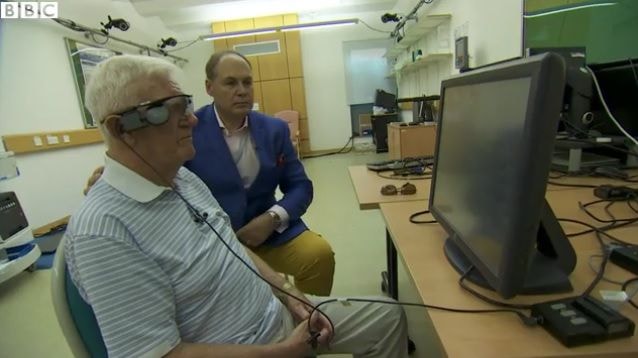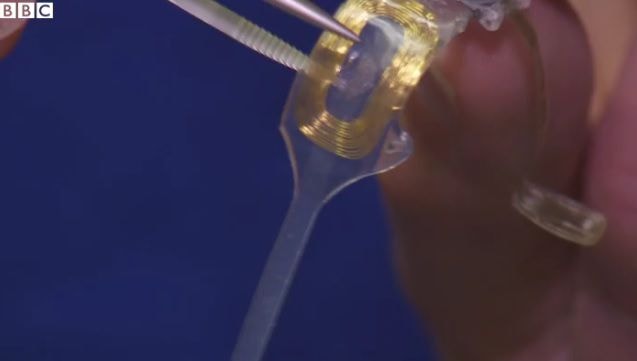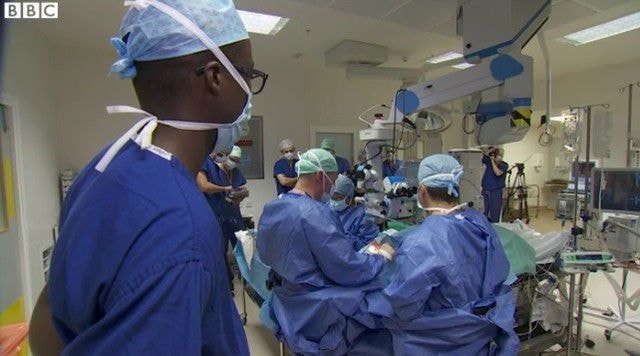Successful implantation of artificial eye into human
This is a new step in biomedical science when for the first time humans were able to successfully transplant eyes into a patient with vision loss.
The surgery performed in Manchester (UK) by doctors at the Royal Manchester Hospital recently can be considered the world's first successful eye transplant.
 |
| Patient Ray Flynn in a test of lines on a computer screen after surgery. |
The man named Ray Flynn, 80 years old, suffered from age-related macular degeneration which led to his complete loss of vision.
Currently (after surgery), he is using a retinal implant that can convert images from a small video camera placed on his glasses. Now, he can determine the direction of horizontal and vertical lines on a computer screen through the use of the glasses.
Flynn said he was "delighted" with the new implant and hoped it would improve his vision enough to help him do household chores such as gardening or shopping.
It is known that the implants called Argus II produced by the American company Second Sight have been used to restore vision to many patients blinded by the rare disease retinitis pigmentosa.
 |
| Tissue transplanted in Flynn's eye |
However, the transplant was on a patient with macular degeneration, one of Flynn's most common eye conditions. The condition had previously robbed him of his sight and forced him to sit very close to the TV to see anything.
The surgery took place over four hours and was led by Paulo Stanga, consultant ophthalmologist and retinal surgeon at the Royal Manchester Eye Hospital, and a team of ophthalmology professors at the University of Manchester.
Currently,Flynn can see silhouettes of people and objects very effectively. Stanga also asserted that "this is just the beginning of a new era for patients with vision loss".
Flynn's new eye implant essentially works by receiving information and images from a miniature camera mounted on the patient's glasses.These images will then be converted into electrical pulses and transmitted wirelessly to an electrode array attached to Flynn's retina. The electrodes will then continue to stimulate the retina's cells and send the visual information to the brain.
There are two different forms of age-related macular degeneration that Flynn has: dry and wet. The dry form that Flynn has, which accounts for 85 percent of people with the disease, causes gradual loss of vision in the center of the retina but does not affect the surrounding visual fields.
An estimated 44,000 people in the UK suffer from dry macular degeneration each year. Meanwhile, Manchester Hospital in the UK has undertaken a trial implant for four people with the condition each year.
 |
| The historic surgery lasted more than four hours. |
Professor Stanga said: "We hope that patients will develop central vision again, which will help them work and see around them. We are very excited by this trial and hope that this technology can help people, including children, with many other forms of vision loss or impairment."
The Argus II implant currently costs around £190,000, including the cost of treatment, although it is currently free for all patients taking part in the trial. The trials are being carried out at the Manchester Clinical Research Facility with financial support from the National Institute for Health Research, which aims to bring drugs and medical devices to patients.
These are just the first experimental studies and it is very likely that in the near future, we will see the results.The results of this study will soon be applied more widely to all patients.
According to khoahoc.tv






